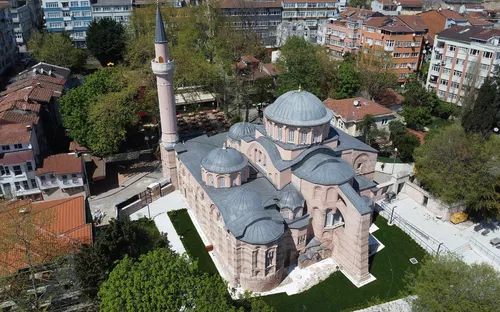Kariye Mosque and its collection
The Kariye Mosque, also known as the Chora Church, is a significant historical site in Istanbul. This medieval Byzantine church was constructed around 550 and has undergone several transformations over the centuries. In the 16th century, it was converted into a mosque, and then it served as a museum from 1945 to 2020. Since 2020, it has returned to its function as a mosque.
Construction of the Current Kariye Mosque
The current structure of the Kariye Mosque largely dates back to the 11th century. It is attributed to Maria Doukaina and was probably built between 1077 and 1081. The wide apse of the church, a notable feature of the building, was constructed in the 12th century.
The Kariye Mosque as the 'Mosaic Mosque'
In the 19th century, the Kariye Mosque gained popularity among Western tourists and earned the nickname 'Mosaic Mosque'. The mosaics in the domes of the church were still visible at this time, offering a glimpse into the mosque's rich artistic heritage. However, the mosaics on the lower walls had disappeared behind wooden doors.
Restoration of the Kariye Mosque's Mosaics
In 1947, the Dumbarton Oaks Field Committee took on the task of cleaning and strengthening the mosaics of the Kariye Mosque. The committee also conducted small-scale excavations and carried out restorations, contributing significantly to the preservation of the mosque's historical and artistic value. This project spanned a total of twelve years.

